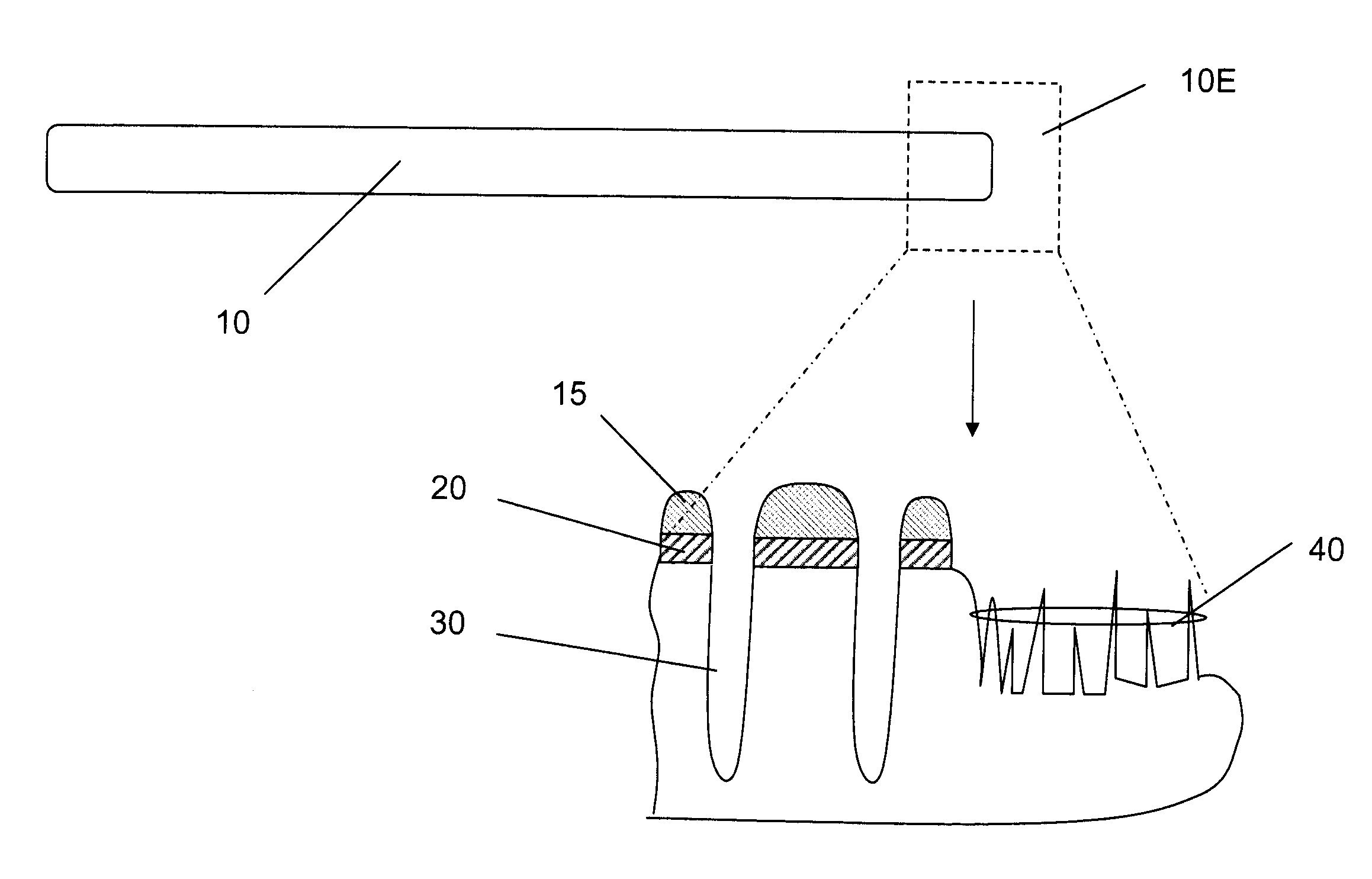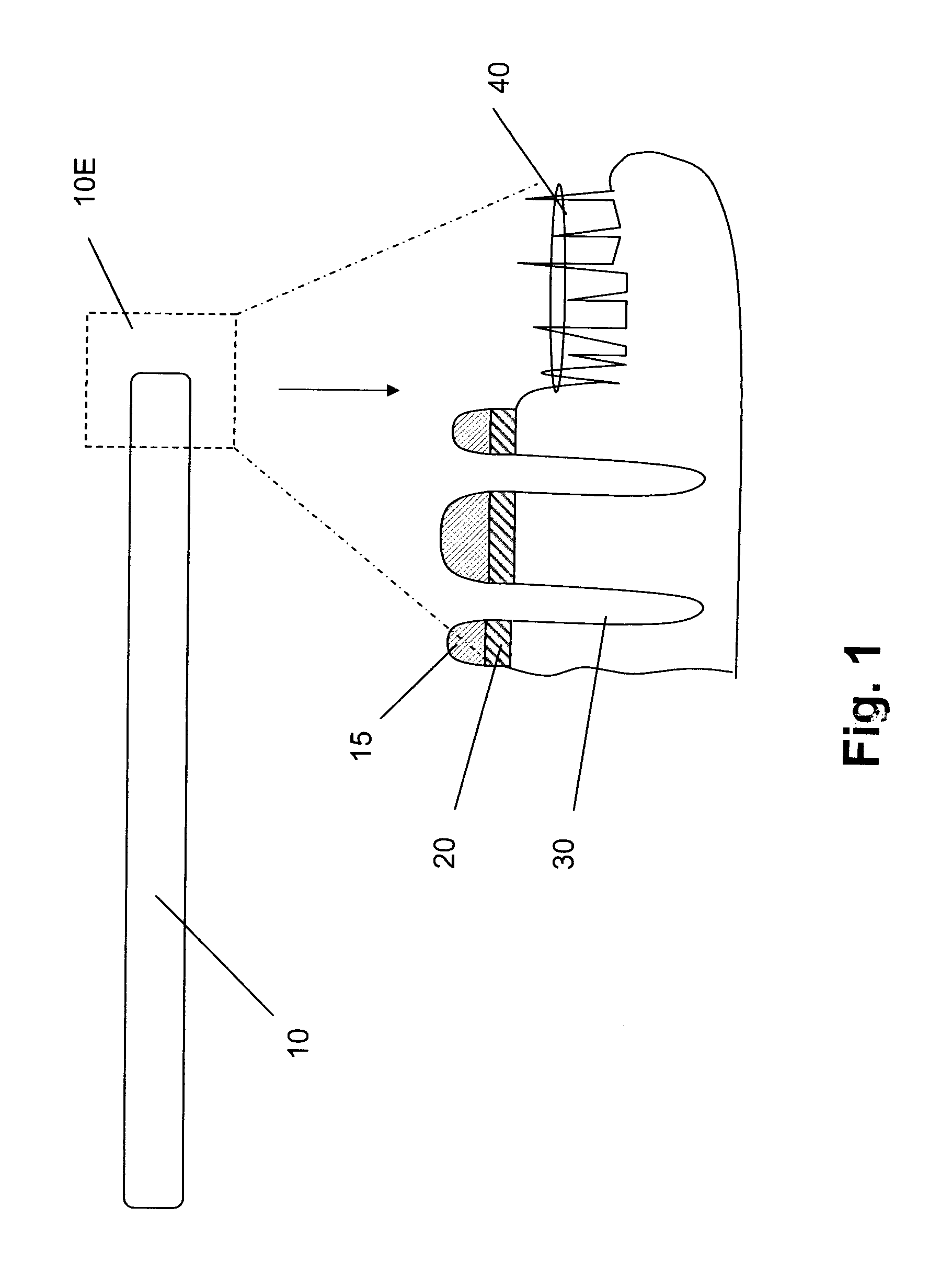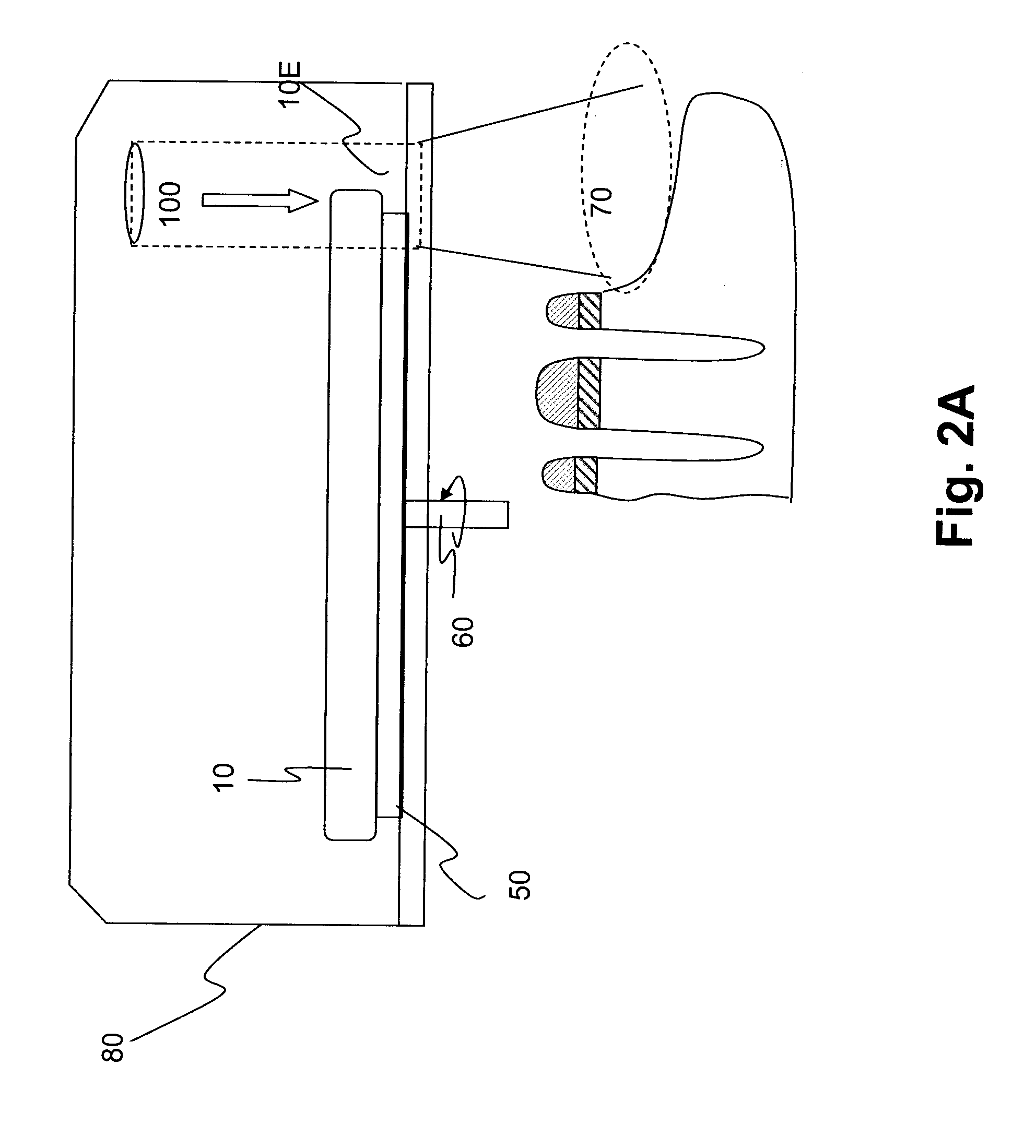Method and apparatus for wafer edge cleaning
a technology of edge cleaning and wafers, applied in the direction of cleaning process and apparatus, chemistry apparatus and processes, cleaning using liquids, etc., can solve the problems of severe defects, yield loss, and inevitably generated defects, so as to reduce the impact of formation, reduce the effect of aging, and be easy to remov
- Summary
- Abstract
- Description
- Claims
- Application Information
AI Technical Summary
Benefits of technology
Problems solved by technology
Method used
Image
Examples
Embodiment Construction
[0021]Referring to FIG. 2, a post-etch wafer 10 is positioned on wafer holder 50 having a spinning post 60. The wafer edge 10E is exposed to a laser beam 100. The wafer is spun at a predetermined rate. The rate of rotation of the wafer may range from about 1 to about 3600 rpm, with 10 to 10 rpm preferred.. Black silicon, which typically becomes amorphous due to ion bombardment during the RIE process, has a lower melting point than single-crystal silicon. It absorbs the light energy and melts, resulting in a smooth profile at the wafer edge. The rough surface which is filled with high-density of spiking structures enhances the light absorption, and results in a rapid meltdown of the back-silicon.
[0022]The preferred source of irradiation is a laser beam. The laser beam can advantageously operate in a continuous wave (CW) or pulsed mode. The wavelength of the laser preferably ranges from 0.1 μm to 20 μm. A XeCl excimer laser having a wavelength of 308 nm is preferably used to melt the ...
PUM
| Property | Measurement | Unit |
|---|---|---|
| wavelength ranging | aaaaa | aaaaa |
| wavelength ranging | aaaaa | aaaaa |
| wavelength | aaaaa | aaaaa |
Abstract
Description
Claims
Application Information
 Login to View More
Login to View More - R&D
- Intellectual Property
- Life Sciences
- Materials
- Tech Scout
- Unparalleled Data Quality
- Higher Quality Content
- 60% Fewer Hallucinations
Browse by: Latest US Patents, China's latest patents, Technical Efficacy Thesaurus, Application Domain, Technology Topic, Popular Technical Reports.
© 2025 PatSnap. All rights reserved.Legal|Privacy policy|Modern Slavery Act Transparency Statement|Sitemap|About US| Contact US: help@patsnap.com



